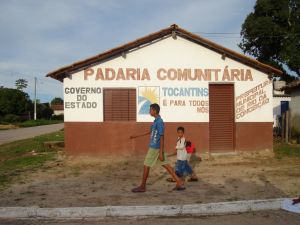
 The data are derived from the income from the National Household Sample Survey (PNAD) for the year 2009. The table queried refers to information of persons 10 years or older, and value of the average monthly income, by gender, class status and monthly income. The most detailed coverage of PNAD is the unit of the federation, so the data portray reality state.
The data are derived from the income from the National Household Sample Survey (PNAD) for the year 2009. The table queried refers to information of persons 10 years or older, and value of the average monthly income, by gender, class status and monthly income. The most detailed coverage of PNAD is the unit of the federation, so the data portray reality state.
In order to better understand the reality of states, the data were aggregated into other lanes of receipt based on minimum wage (MW). Thus, the 10 tracks of original PNAD classes (up to ½ MS, ½ to over 1 MW, more than 1 to 2 MW, more than 2 to 3 MW, more than 3 to 5 MW, more than 5 to 10 MW, more 10 to 20 MW, more than 20 MW, no income (income and no statement) were included in five aggregate classes, as follows: ½ to 1 MW, more than 1 to 3 MW, more than 3 MW, no income and without declaration. As the data without a declaration proved insignificant in the national and state level, they have been ignored in the analysis.
Population representative of the Brazilian labor force, 25,19% receive up to 1 MW, 29,59% of income is greater than 1 and up to 3 MW, 3 MW of 12,67% and 31,09% of the national EAP does not receive any salary. On average the states, except in the category with no income, there are considerable differences regarding the percentage of Brazil. It is noteworthy that in Tocantins, more than 60% of the PEA receive up to 3 MW, more than the national average of 54,78%.
In the salary range of up to 1 MW is Piauí with 42,82% of the EAP mentioned receiving income. In higher income from 1 to 3 MW is the Maranhão and Piauí with 18,86 and 19,96% of the PEA, respectively. The higher incomes of 3 MW in Maranhão, Piauí and Bahia are presented in percentages of 5,44%, 5,78% and 6,59% respectively. In the states of Bahia, Maranhão, Piauí and Tocantins percentages of the numbers are almost devoid of income corresponding to that found in the values of no income in Brazil.
On gender issues, women's presence in the band is markedly lower income, monthly up to 1 MW, a mean percentage of 5,60% in the four states and 7,70% in Brazil. If we add the following two income groups (1 to 3 MW and greater than 3 MW), we have men with higher wages than women in all states, with differences between the male female income in the order 18,57 % of labor force in Brazil, 13,51% in Maranhão, Tocantins 13,66% from 12,18% in 8,98% Bahia and Piauí.
On the possibility of the location of the PEA in the territorial space of states influence whether or not the income, urban Brazil in the sum of those who do not receive or receive up to 1 MW amounts to little more than 50% of the PEA, whereas in the states this combination holds more than 60% (on average) the PEA.
Thus, it is clear that wages are higher in urban areas, an average ratio of 17,11% (in state averages) more than in rural areas. By analogy with the conclusions of the item population, stating that the municipalities of São Gonçalo do Gurguéia (PI) and Rio Sono (TO) holders of the largest rural population in the target area, it is concluded that they are the municipalities with the distribution income for its most perverse PEA, since wages are the best seats in urban areas.